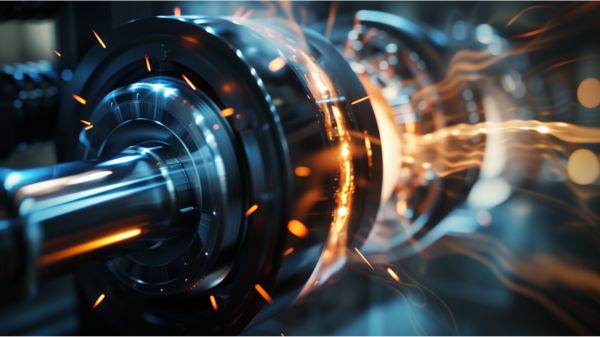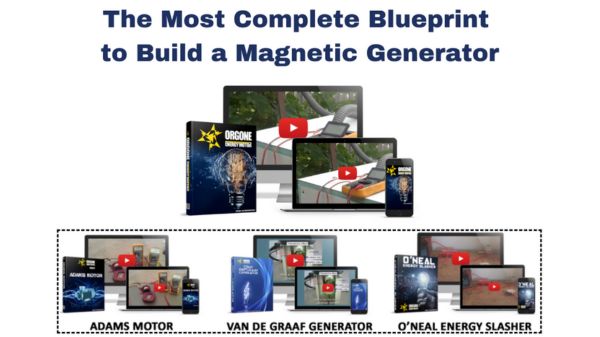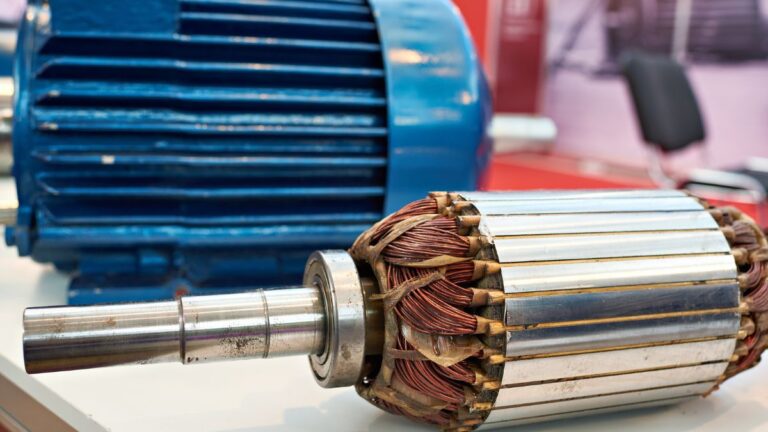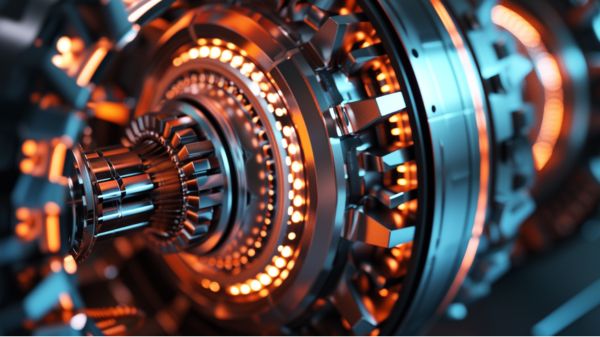How to Enhance Your Electric Generator With the Right Magnet
Are you tired of your electric generator magnet not performing up to your expectations? Well, fear not! With the right magnet, you can enhance the efficiency and output of your generator.
But how do you choose the right magnet? And what steps should you take to install it properly?
In this discussion, we will delve into the world of magnets and explore the various factors to consider when enhancing your electric generator. So, if you’re ready to take your generator to the next level and unlock its full potential, keep reading to discover the secrets of magnet optimization.
Key Takeaways
- Choosing the right magnet material is crucial for enhancing the performance of your electric generator.
- Evaluate magnet strength, size, weight, and temperature resistance when selecting the right magnet.
- The size and placement of magnets in the generator can significantly impact field strength and voltage output.
- Regular maintenance, proper alignment, and optimization of magnet placement are essential for maximizing generator performance.
Understanding the Role of Magnets in Generator Performance
To fully comprehend the performance of an electric generator, it’s imperative to understand the pivotal role that magnets play in creating the necessary magnetic field for inducing electricity in conductive wire. In the world of science, magnets are the driving force behind generator performance.
The strength of the magnet directly influences the intensity of the magnetic field, which in turn impacts the efficiency and output of the generator. Permanent magnets are commonly used due to their ability to maintain a constant magnetic field without the need for an external power source. By aligning these magnets properly with the wire loops, optimal electromagnetic induction can be achieved, resulting in a higher induced voltage.
Selecting magnets with higher magnetic flux density can further enhance the overall efficiency and power output of the generator. Thus, understanding the magnetic properties and configurations of magnets is crucial for maximizing generator performance.
Types of Magnets Suitable for Enhancing Generators
When it comes to enhancing generators, the choice of magnet material is crucial. Neodymium magnets are popular due to their strong magnetic field, while ceramic magnets offer a cost-effective option.
Alnico magnets provide high temperature stability, and rare earth magnets like samarium-cobalt are highly resistant to demagnetization.
Selecting the right magnet material, along with the appropriate size, is essential for optimizing the magnetic field strength and improving generator performance.
Magnet Material Options
Neodymium magnets, with their strong magnetic properties, are an ideal choice for enhancing the performance of electric generators. These magnets provide a powerful magnetic field, which results in increased efficiency and output of the generator.
However, there are other magnet materials that can also be considered for this purpose. Ceramic magnets offer a cost-effective option for improving generator performance. While they may not be as strong as neodymium magnets, they still provide a significant boost in magnetic field strength.
Alnico magnets, on the other hand, provide a balance between strength and temperature stability, making them suitable for generator applications.
Lastly, samarium cobalt magnets are known for their high resistance to demagnetization, making them a reliable choice for generator upgrades.
Selecting the right magnet material is crucial for optimizing the magnetic field and efficiency of your electric generator.
Choosing the Right Size
When selecting magnets to enhance the performance of your electric generator, it is crucial to choose the right size and type for optimal magnetic field strength and voltage output. The size of the magnet directly affects the magnetic field strength, which in turn influences the generator output.
Larger magnets generally produce stronger magnetic fields, resulting in higher voltage output. However, it is important to balance the size with the specific requirements of your generator to avoid excessive weight or space constraints.
To help you make an informed decision, consider the following table showcasing different types of permanent magnets suitable for enhancing generators:
| Magnet Type | Magnetic Properties |
|---|---|
| Neodymium | High magnetic strength |
| Ceramic | Affordable and moderate properties |
| Alnico | Stable magnetic fields |
| Samarium-Cobalt | High-temperature resistance |
Factors to Consider When Choosing the Right Magnet
To ensure optimal performance and efficiency in enhancing your electric generator, it’s crucial to carefully consider various factors when choosing the right magnet.
First and foremost, you need to evaluate the magnet’s strength, which is typically measured in Gauss or Tesla. A magnet with higher strength will yield better results in generating electricity.
Additionally, it’s important to assess the magnet’s size and weight to ensure it can fit and function effectively within your generator setup. Opting for rare-earth magnets, such as neodymium, is recommended due to their high magnetic strength and efficiency in generating electricity.
Furthermore, it’s essential to check the magnet’s temperature resistance to ensure it can withstand the operating conditions of your generator.
Lastly, choose magnets with stable magnetic properties to maintain consistent performance and output in your electric generator. By considering these factors, you can enhance the efficiency and effectiveness of your electric generator.
Step-by-Step Guide to Installing the Magnet in Your Generator
Before proceeding with the installation of the magnet in your generator, it’s essential to ensure that you have chosen a magnet with the appropriate strength and size for optimal performance. Once you have selected the right magnet, follow this step-by-step guide to install it in your generator.
- Begin by locating the loop of wire or coil windings inside the generator. This is where the magnet will interact with the magnetic fields to induce voltage and generate electricity.
- Ensure that the magnet is aligned properly with the coil windings. The orientation of the magnet’s poles is crucial for effective electromagnetic induction. Align the magnet’s poles with the coil windings to maximize the interaction between the magnetic fields.
- Securely install the magnet in its designated position within the generator. This will enhance the magnetic flux density, resulting in a stronger induced voltage and improved generator output.
Remember to regularly inspect the magnet’s position to prevent interference with other components and ensure consistent generator performance.
Testing and Measuring the Impact of the Magnet on Generator Output
To accurately measure the impact of the magnet on your generator’s output, start by using a multimeter to measure the voltage before and after the magnet enhancements.
Conduct tests by varying the magnet strength or position to observe changes in performance and use a data logger to track voltage fluctuations over time with different magnet configurations.
Testing the Magnet’s Effectiveness
Assess the impact of the magnet on your generator’s output by accurately measuring the voltage increase achieved through the incorporation of the magnet using a multimeter. This will allow you to determine the effectiveness of the magnet in enhancing your generator’s performance.
Conduct multiple tests with varying magnet strengths to find the optimal level of enhancement. Ensure the magnet is positioned correctly near the generator coils to maximize its effect during testing. Additionally, record and compare current readings to evaluate the magnet’s influence on the generator’s performance.
By measuring the output voltage and analyzing the current readings, you can determine the effectiveness of the magnet in increasing the generator’s output power.
Measuring Generator Output
To accurately measure the impact of the magnet on your generator’s output, use a multimeter to quantify the increase in voltage achieved through the incorporation of the magnet. By following these steps, you can effectively measure the generator output and assess the influence of the magnet:
- Check the voltage generated with and without the magnet to accurately assess the magnet’s impact.
- Record and compare voltage readings to determine the magnet’s effect on the generator output.
- Conduct multiple tests with varying magnet positions to understand the optimal configuration for enhanced output.
- Analyze the voltage fluctuations with different magnet strengths to gauge the magnet’s contribution to generator performance.
Using a multimeter allows you to measure the voltage precisely, providing you with valuable data to evaluate the magnet’s influence on your generator’s output. By understanding the magnitude of the increase in voltage achieved, you can optimize the magnet’s placement and strength for maximum generator performance.
Troubleshooting Common Issues With Magnet-Enhanced Generators
Ensure the magnet’s alignment with the generator coils is properly calibrated to optimize its interaction and enhance electricity generation. Check the strength of the magnet to ensure sufficient magnetic field induction for efficient electricity generation.
Verify the stable placement of the magnet to prevent disruptions in the magnetic field and output. Inspect the magnet’s condition for any damage or wear that could affect its performance in enhancing the generator.
Test different magnet configurations and positions to determine the optimal setup for maximizing generator output. Troubleshooting common issues with magnet-enhanced generators requires a technical and analytical approach.
Maintenance Tips for Maximizing the Benefits of Magnets in Generators
When maintaining the magnets in your generator to maximize their benefits, it’s crucial to regularly clean and inspect them for optimal performance. Here are some maintenance tips to help you get the most out of the magnets in your generator:
- Clean and inspect the magnets regularly to ensure they’re free from dirt, debris, and any signs of damage.
- Use high-quality magnets with strong magnetic fields to enhance power generation efficiency.
- Properly align the magnets within the generator to maximize the magnetic field strength and improve overall performance.
- Consider the size and shape of the magnets to ensure they fit the generator design and function effectively.
- Implement temperature control measures to prevent demagnetization and maintain the strength of the magnets.
Frequently Asked Questions
What Is the Best Magnet Shape for a Generator?
The best magnet shape for your generator depends on several factors. Cylindrical or rectangular magnets optimize magnetic field strength. Neodymium magnets offer high magnetic strength and compact size, while rare earth magnets can enhance generator efficiency.
How Do You Increase the Magnetic Field of a Generator?
To increase the magnetic field of your generator, focus on magnetic coil construction, magnet material selection, and optimizing magnet positioning. Implement cooling techniques to prevent demagnetization and understand how increased field impacts efficiency.
How Does the Strength of a Magnet Affect a Generator?
The strength of a magnet significantly affects the power output of your generator. Choosing the right magnet is essential for optimizing efficiency. Consider factors like magnet strength, placement, and measuring techniques to enhance generator performance.
How Can I Increase the Strength of My Electric Generator?
To increase the strength of your electric generator, focus on generator efficiency, magnetic coil design, power output optimization, magnet selection criteria, enhancing generator performance, and magnet positioning techniques.
Conclusion
In conclusion, by carefully selecting and installing the right magnet in your electric generator, you can significantly enhance its voltage output.
Through optimizing coil design, increasing the number of windings, and adjusting magnet speed and strength, you can improve the efficiency and performance of your generator system.
By understanding the principles of electromagnetic induction and ensuring proper alignment of magnet movement and coil design, you can maximize the benefits of magnets in generators and achieve improved voltage generation.







